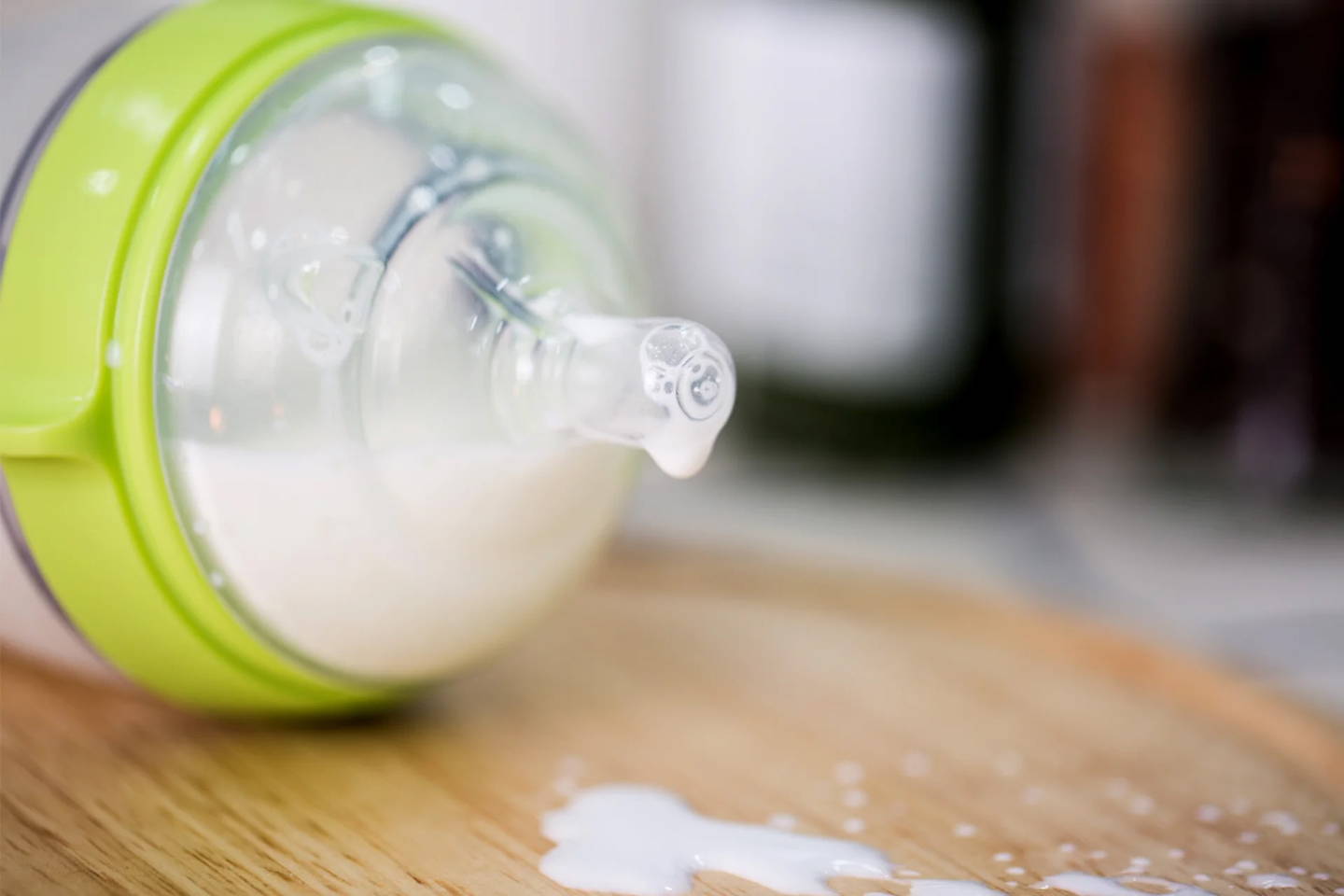
Best Ways to Introduce a Bottle to a Breastfed Baby
| Pregnancy |
My son’s pediatrician once said to me, “there are a million ways to skin a cat.” She was responding to my frazzled, tired, unconfident new mama self when we were at my son’s one-week checkup. I wanted concrete answers to everything parenting-related, forgetting of course that our babes don’t come with instruction manuals, and her response — such a funny and perfectly appropriate thing to say to a Nervous Nelly new parent — stayed with me.
It’s true: there are a million ways to skin a cat, also known as there’s no one-size-fits-all approach to parenting. As a lactation educator, I work with clients who have many different philosophies, needs, and hopes for their respective breastfeeding journeys. And even though there are countless ways to navigate the world of breastfeeding/chestfeeding/bottle-feeding — do I exclusively pump? To use a nursing cover in public or not? What’s with all those nipple creams on the market?— sometimes it’s nice to have concrete answers to common questions and problems.
One of the most frequent questions I get is from the mom who wants to introduce the bottle to her exclusively breastfed baby. She’s either gearing up to return to work or wants a night out on the town with the girls or just wants a few unattached hours to herself. I get it.
Here are my top five ways to introduce the bottle to the breastfed baby:
1. START SMALL
All new skills require practice, and the same goes for taking a bottle. Giving your babe time to adjust to this new milk-delivery-method sets her up for success. To start, offer 1-2 ounces of pumped milk in the bottle. If baby is unapologetically hungry, offer the breast first to take the edge off, then switch to the bottle before she gets full. Associating the bottle with feelings of comfort and fullness is a good thing, much better than expecting a hungry babe to try her hand (er, mouth) at a new task.
2. LET BABY LEAD
Breastfed babies regulate how much milk to take in and how quickly to do it: she hops on the breast, sucks actively for a minute or two before hopping off, completely sated and content, or takes her sweet time, sucking actively and then pausing or snoozing before resuming again (the equivalent of a leisurely four course meal.) Approach bottle-feeding the same way by teasing baby’s lips with the bottle’s nipple and letting her decide when to open her mouth. To force the nipple in baby’s mouth goes against everything she has learned as a breastfeeder and might turn her off from the bottle altogether.
3. TAKE IT SLOW
Like a fine wine, let baby savor the milk she’s drinking from the bottle instead of having her race to finish in a couple of minutes. Do this by pacing the feeding to mimic the length of one of your average breastfeeding sessions. Prop baby in a seated position so she isn’t lying down and passively receiving the milk that drips and offer the bottle horizontally so that she actively works for the milk in much the same way she does at the breast. Then, remove the bottle intermittently during the feed to slow down the process so that a 3-4 ounce bottle takes 10-15 minutes to finish. Using a slow flow nipple is also key here: it mimics the release of milk in the breast so that baby has to work for it, rather than receive an easy gush of milk from the bottle (that might make her resent the “work” of breastfeeding in the future).
5. INVOLVE OTHERS
Many breastfed babies associate “boob time” with mom alone and consider bottle-feeding an entirely separate activity. Having another caregiver try introducing the bottle may help baby recognize that bottle-feeding complements and doesn’t replace time with mom at the breast.
4. R-E-S-P-E-C-T
We can all vouch for this: some days, we’re hungrier than others, and how resentful were we when some authority-figure adult told us to finish everything on our plates as kids? The same rule applies to feeding our little ones with the bottle. There’s no way to tell just how much milk baby is getting on a given feed when she’s at the breast; we just trust that baby will stop when she’s finished. Just because you pour 4 ounces of milk in the bottle doesn’t mean baby is hungry enough to finish all of it, and that’s alright. Forcing baby to “finish” a bottle to empty can turn her off from the experience and change her innate hunger cues that she’s used so well at the breast. Respect her needs, even when that means she’s full.
Written by Sarah Siebold
Sarah is a Certified Lactation Educator Counselor who believes in giving mothers, mothers-to-be, and their partners the support and education to make informed decisions about how to feed their little ones. She’s the owner of IM•MA, a lactation education practice in Los Angeles that offers prenatal and postnatal breastfeeding classes, consults, and support groups. She holds a Masters in English Literature and Education and pinches herself silly to get to do the work she loves with moms and their sweet babes. Her greatest role is as mom to her cuddly and ever-curious 16-month-old son, Noah.



